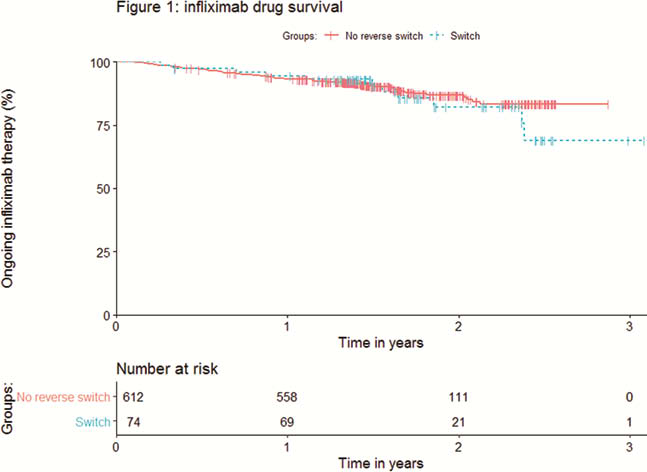P326 Reasons for and effectiveness of switching back to originator infliximab after a prior switch to CT-P13 biosimilar
S. Mahmmod1, J.P.D. Schultheiss1, A.C.I.T.L. Tan2, M.W.M.D. Lutgens3, L.P.L. Gilissen4, N. Mahmmod5, A.E. van der Meulen - de Jong6, G. Dijkstra7, A.A. van Bodegraven8, B. Oldenburg1, H.H. Fidder1
1Department of Gastroenterology and Hepatology, UMC Utrecht, Utrecht, The Netherlands, 2Department of Gastroenterology and Hepatology, Canisius Wilhelmina Ziekenhuis, Nijmegen, The Netherlands, 3Department of Gastroenterology and Hepatology, Elisabeth-TweeSteden Ziekenhuis, Tilburg, The Netherlands, 4Department of Gastroenterology and Hepatology, Catharina Ziekenhuis, Eindhoven, The Netherlands, 5Department of Gastroenterology and Hepatology, St. Antonius Ziekenhuis, Nieuwegein, The Netherlands, 6Department of Gastroenterology and Hepatology, Leiden UMC, Leiden, The Netherlands, 7Department of Gastroenterology and Hepatology, UMC Groningen, Groningen, The Netherlands, 8Department of Gastroenterology and Hepatology, Zuyderland Ziekenhuis, Sittard, The Netherlands
Background
In current clinical practice, patients with inflammatory bowel disease (IBD) treated with originator infliximab (IFX) have been or are being switched to biosimilar infliximab (CT-P13) because of lower costs and seemingly similar effectiveness of biosimilars. Over a one-year follow-up, 7%-26% of the patients discontinue CT-P13 treatment. Common reasons for CT-P13 discontinuation are (subjective) loss of response or adverse events. As a result of these newly experienced symptoms, patients are occasionally switched back to treatment with originator IFX. However, not much is currently known regarding reverse switching to originator IFX. We aimed to assess the prevalence of and the specific reasons for reverse switching to originator infliximab within 52-weeks after an initial conversion from originator infliximab to CT-P13 in patients with IBD. Additionally, we evaluated whether reinitiating originator infliximab led to the desired favourable effect and sustained infliximab use.
Methods
In this retrospective, multicentre cohort study, data of IBD patients from eight hospitals in the Netherlands were collected. Adult patients with IBD were eligible for inclusion if they were switched from infliximab originator to CT-P13 and had a follow-up time of at least 52 weeks after initial conversion. Reasons for re-switching were categorised into adverse events or loss of response on the biosimilar. Drug survival was analysed with a time-varying Cox proportional hazards model.
Results
A total of 684 patients with IBD were switched (516 Crohn’s disease, 168 ulcerative colitis). Reverse switching was seen in 74 (10.8%) patients after a median of 140 days (IQR 86–231). Reverse switchers were more often females (70.3% vs. 49.7%,

Conclusion
Switching back to originator infliximab seems effective in patients with IBD, who experience adverse effects or loss of response after switching from originator to CT-P13. Switching patients back to originator infliximab might, therefore, be justified in case patients experience new side effects or loss of response after switching to CT-P13.


